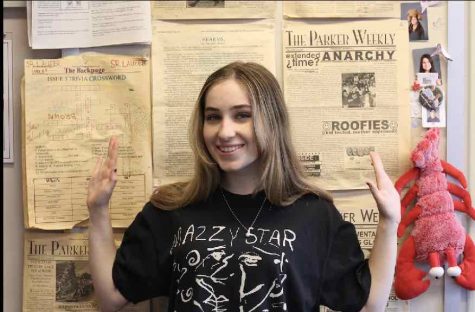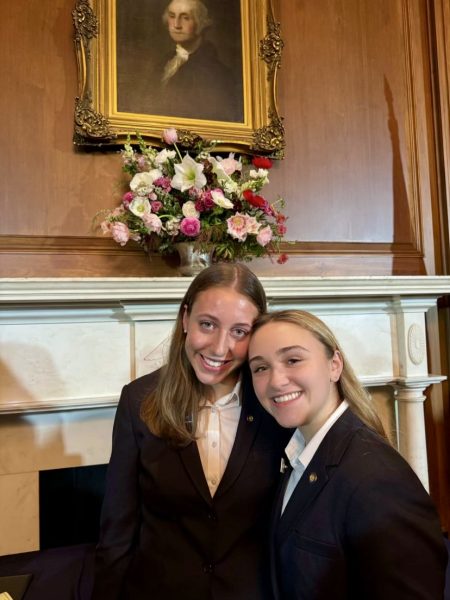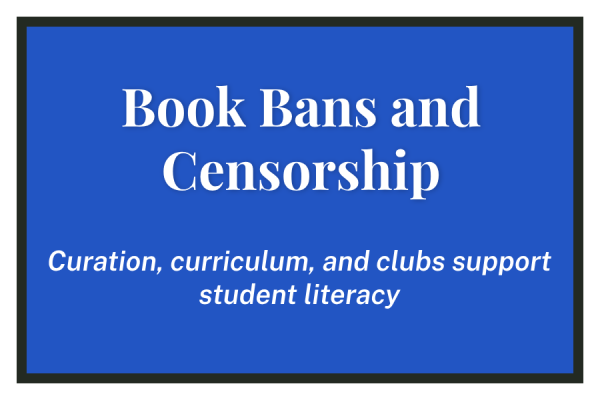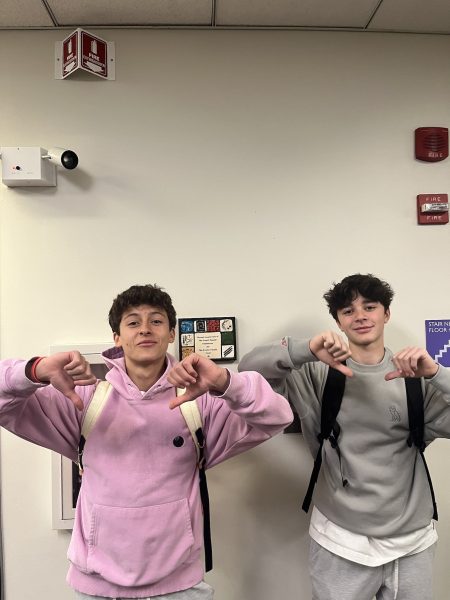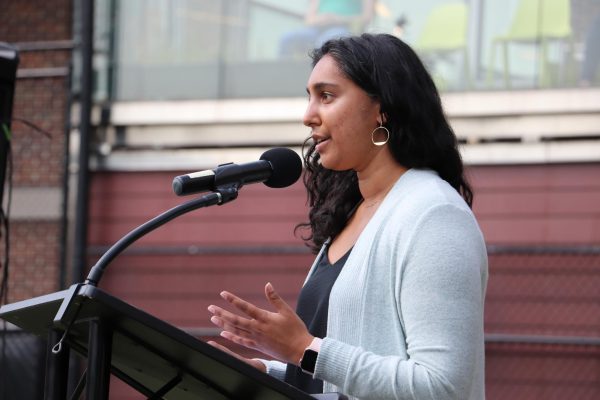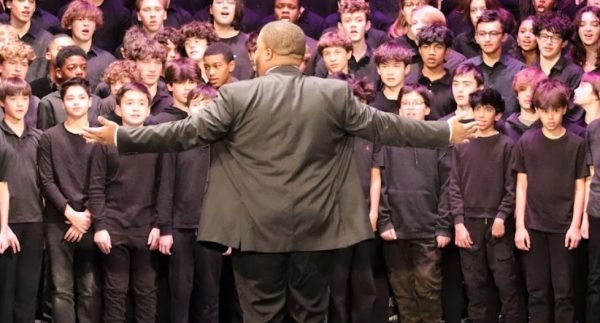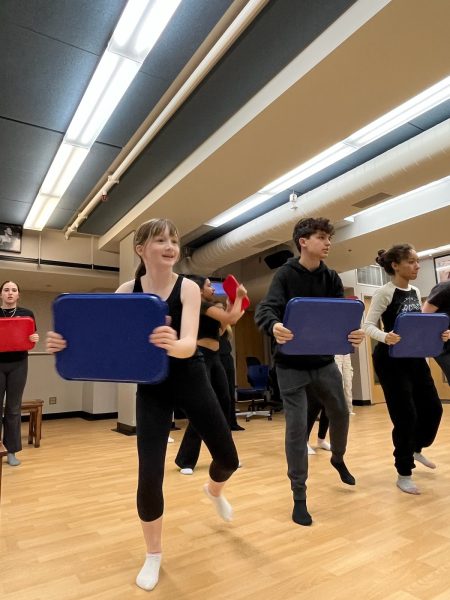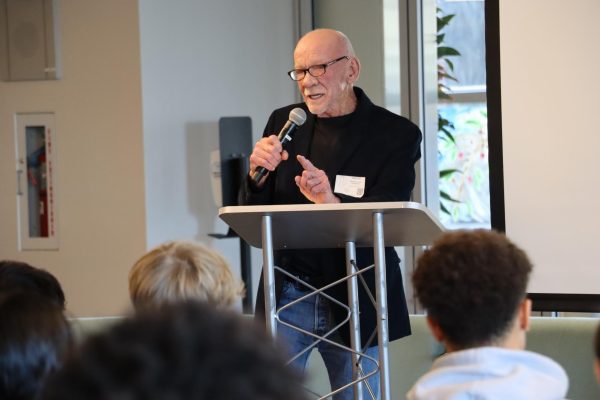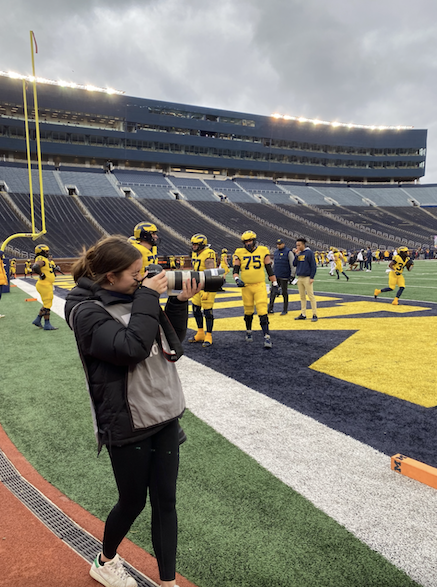The State Of Our Mission
ISACS Team Visits Parker
The school’s mission pops-up in MX speeches, school-wide emails, and framed posters, in classroom conversations or jokes about empathy, clarity, and courage. From February 9 to 12, a group of 15 educators from the Independent Schools Association of the Central States (ISACS) came to put this mission to the test as a part of the school’s seven-year accreditation cycle.
For these four days, the visiting team evaluates the school on the school’s terms. They interview the Parents Association, the Board of Trustees, students, and faculty, and observe classes to generate a report that will eventually determine whether the school is re-accredited.
According to their website, ISACS has more than 240 a c c r e d i t e d member schools across the region— schools that use the network for their professional development and accreditation services. Beyond its professional incentive, the accreditation process encourages schools to look at their institutional health.
The school completes a new part of the evaluation cycle every school year. During year two, the school looks inward as its steering committee, led by Assistant Principal Ruth Jurgensen, oversees the writing of a self-study. In year three, the visiting team arrives to draft their own report on the school.
The report is then reviewed by the ISACS Central Committee before being returned to the school in September, though Principal Dan Frank acknowledges a possibility for COVID-19-related delays.
The school will almost certainly be re-accredited when this report is returned, as it is currently listed as a Fully Accredited Member School in the ISACS database.
The school held a reception in the library for the team, faculty, and staff after their Sunday arrival. There, teachers had the opportunity to meet the ISACS team members assigned to their department. Frank and Director of Enrollment and Financial Aid Karen Fisher then gave them a tour of the school.
Freshman Lucas Daskal and sophomore Aidan Young helped give tours to the ISACS team. “The faculty members would give a general overview of the school and then we go into specifics about what a class looks like, what a schedule looks like, what sports look like,” Young said. “We’re there to give the student perspective on what the student daily life is.”
Young and Daskal noted that the visiting team’s interests went beyond academics, extending to extracurriculars and facilities. “I think anyone who goes to Parker kind of knows what MX is like. Among the students it’s not always popular,” Daskal said. “Among people outside of Parker, it’s a big deal. So they were really into MX. They said the library was pretty extravagant, but it was mainly the auditorium they liked.”
“I think anyone who goes to Parker kind of knows what MX is like…outside of Parker, it’s a big deal.”
After their weekend tour, the team visits the school every day until they leave midday Wednesday. Frank, who has been on ISACS visiting teams himself, acknowledges the intensive nature of the work. Parker provided them with food and refreshments throughout the day.
The team completed their pre-scheduled meetings with key constituencies before roaming the school each day. At night, they returned to the Hotel Lincoln to draft the report in the conference room. Members usually write two to three sections each so that they have a completed draft to submit by Wednesday. Per ISACS protocol, no members of this team are allowed to be reached for comment.
Beyond preparing the self-study and keeping the visiting team comfortable, the school’s job is mostly to prepare faculty for the visit. Administrators explained what the visit would look like and emphasized that the visiting team wasn’t individually evaluating teachers.
Administrators also had to make sure teachers were ready for classroom visits. “They were given the keys to the house, and they just go wherever they want to whenever they want to,” Frank said. “All the administrators had cleared their calendars, so they could be available and flexible. Teachers were told ‘don’t give quizzes, tests, exams, and have real live discussions in classrooms so that when the visitors come in they see Parker education happening.”
Teachers were told ‘don’t give quizzes, tests, exams, and have real live discussions in classrooms,’ so that when the visitors come in they see Parker education happening.”
Daskal had two of these visits in his classes, but he doesn’t think visitors get an accurate picture of Parker from classroom drop-ins. “They’re only exposed to the really positive parts of Parker,” Daskal said. “They aren’t really exposed to maybe things that could be worked on, or things that aren’t going so well. Even in our classes, our teachers would give us a notice, you know, like ‘be on our best behavior.’ When they would walk into the classroom, everyone would sit up straight and focus and not have side conversations.”
Young agreed that it would be difficult to give the school recommendations based on the short visit, but he believes the team tried their best.
Upper School English teacher Mike Mahany had two visitors when he taught. “I asked them to please just mingle around, ask the kids what they’re doing, poke your head in, look over people’s shoulders,” Mahany said. “The last time, seven years ago, I don’t think anyone ever came to talk to me. So I think it’s kind of a crapshoot. They try to see all the classes. They don’t all the time.”
Mahany is familiar with that evaluation process as a member of the steering committee and a longtime Parker teacher who’s been through four accreditation cycles. “It’s not valuable if we’re just going through it because we do it every seven years, and this is what every school does, and of course we’re going to be accredited, and let’s move on,” Mahany said. “I also hope every department and every level of the school takes the recommendations to heart and at least gives them a fair consideration.”
“I…hope every department and every level of the school takes the recommendations to heart and at least gives them a fair consideration.”
Their goal is to use their time in these classes to evaluate Parker on its own stated mission, not on their own ideas about education. “They say, ‘Parker, you claim to be this,’” Frank said. “‘Alright, that’s your ideal. How far away is the reality?’ So that’s what we pour our energies into, is always trying to narrow the gap between the ideal and the real.”
At the end of the visit, the ISACS visiting team delivers these specifics in the form of an oral report. The chair of the visiting committee stays behind on Wednesday to read out a list of recommendations and three commendations to faculty. The chair doesn’t take questions and there’s no opportunity for faculty follow-up. Most faculty members have to wait until the fall to see a hard copy of the feedback, when departments will review their sections of the ISACS report.
Frank recalls one recommendation on social-emotional learning and diversity, equity, and inclusion. “Their recommendation was, you guys really are national leaders, and we recommend you just keep on going and do more of it, because it’s helpful to everybody,” Frank said. “And I thought, oh, that’s a nice recommendation.”
Mahany remembered two others. “They talked about the tension between the leadership on one hand and the independence of teachers on the other hand, and trying to figure that out,” Mahany said. “As a teacher, I feel autonomous in some ways because I can teach what I’d like. But there’s always a tension between that autonomy of teachers, and then the administration who is leading.” Mahany also noted that the chair suggested Parker keep the school affordable and accessible to a variety of people.
Under ISACS protocol, Frank cannot share details of the report, though he said in general the team appreciated the ways constituent groups “focused on our inspiring mission to foster creative ways to address opportunities, challenges and new ways to support progressive education and student voice at Parker.”
Frank also enjoyed the team’s feedback on Parker’s self-study. “They were quite impressed by the depth of it,” Frank said. “We’ve already started to implement a variety of plans and priorities that were outlined in that work. That’s a very Parker attitude. We believe good ideas come from all kinds of places and it’s a process that allows good ideas to come forward and then put them in a document so we can follow through thoroughly. ISACS expects us to follow through in a thorough way, there are various phases of reporting we have to give back to them over the next seven years, there are markers where we have to show progress. That just keeps everybody in a healthy place.”
